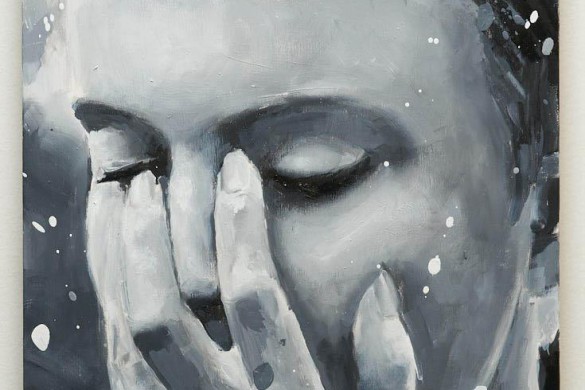Art as Investment…
When I first started showing my work professionally, my target market was young professionals. Most of my clients had a miniscule budget for buying art, but they saw something they loved in my work. My paintings were inexpensive – I was just starting out and trying to gain purchase in a highly competitive and intense market. For many of my early clients, my work was their first real art purchase. I loved dealing with people who were excited about this new art-buying stage of their lives, as I was excited about this new, art-making stage of mine. In the years since then, I have counseled many of those clients on further art purchases, and some have since grown into attentive and serious collectors.
In the first few years of my painting career, I knew that many of my customers had to stretch financially to buy my paintings, and as a result, they treated them with great reverence and a bit of awe. They were proud of their purchases and proud of themselves for making art a priority. It made them feel grown-up. So the first time I heard from a potential customer that my work was too cheap, I was more than a little surprised!
It was one of my first studio shows, where I invited friends and family to my home to view my new collection. I had only been showing my work for a year, and had only had feedback from young, inexperienced buyers. At this show, I had invited relatives, friends of my parents, and business associates of my husband; all of whom had a more sophisticated handle on the art market than my usual customers, and many of whom were serious collectors. The first person who came in said it was nice work, and that in a few years he would consider buying something. He liked a small piece that I was selling for $300, and said to let him know when it was $3,000 and he would come back and look at it then.
That size painting now retails for more than triple what it did then, but my work is also far more advanced stylistically. While it is certainly more expensive, it is also more balanced, richer and far more developed than it was when I was just starting out. However if I called that guy today and showed him the exact same early work from 2006 and slapped a $3,000 price tag on it, he would probably buy it. I have met many people like him in the years since.
Most collectors are passionate about the aesthetic appeal of the art they purchase. But sadly, there are also many collectors out there who have little appreciation for the art itself. The only measure they know of whether the art is “good” or not is the market value, and unfortunately they are missing the point: the best judge of the value of art is the human heart. We don’t need art critics, dealers and price tags to tell us what we love. We just need to look at art, learn about art, and remember that the real value of owning something beautiful is the joy it brings, not the resale value.
Am I opposed to buying art for investment? Absolutely not! Some of the world’s most spectacular museum collections are only available for us to enjoy because wealthy collectors have purchased and donated them. Investment collectors keep money flowing into the art world; keeping auction houses, galleries and artists alive to keep doing what they do. But I feel conflicted when I think that one day, someone could buy one of my paintings for investment purposes and feel nothing when they look at it.
In 1991, celebrated British artist Damien Hirst created a huge stuffed shark preserved in formaldehyde and mounted in a glass case. In 2004, an American collector bought it for an undisclosed amount, rumored to be somewhere between 8 and 12 million – a staggering sum for a living artist’s work. It was an affecting and important work, but by the time the deal was made, the original shark had long disintegrated into a decaying ruin. Hirst had already stretched its skin over a plexiglass model of a shark. This plexi version showed in galleries for several years before Hirst again replaced it with a fresh shark. Much has been written about this story, but my interest in it today is the question of how far collectors and artists will go to own or produce something that the market declares important. Where is the intrinsic value in this?
My rule of thumb when buying art is to ask myself how much the piece is worth to me in terms of how much I will enjoy looking at it. We assume the purchaser of the shark was concerned only with investment value, but maybe he just loved the way a huge dead decomposing animal looked next to his TV? I’d like to think it was the latter, and I hope he made back his 8 or 12 million dollars a hundred times over in sheer enjoyment every time he looked at his acquisition.
Thanks for reading!
Sari Zon
There are no rules about investment. Sharks can be good.
Artists dung can be good. Oil on canvas can be good.
(Charles Saatchi)

Sari Zon Art
I am a Toronto artist and graphic designer. I hope you enjoy my writings about art and living artfully. To see my work, please visit my website at http//www.sarizonart.com.


